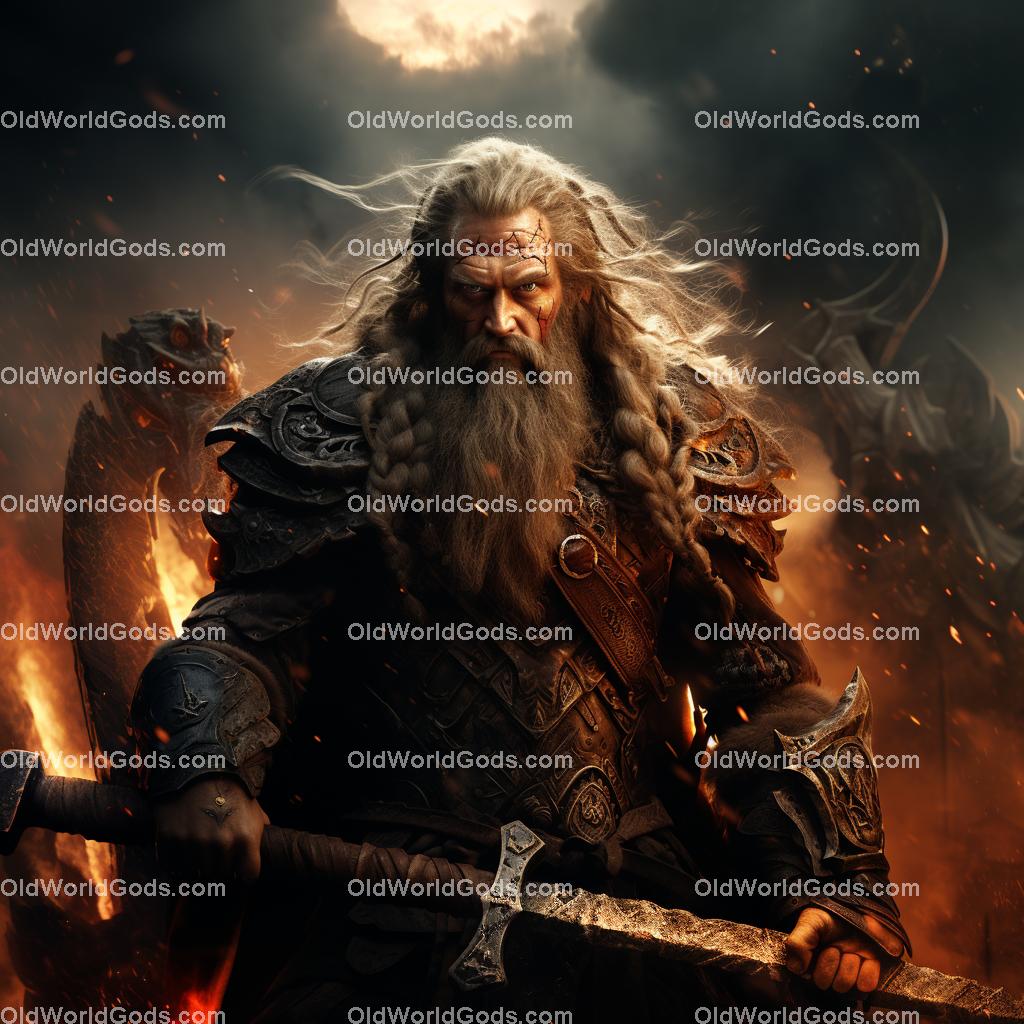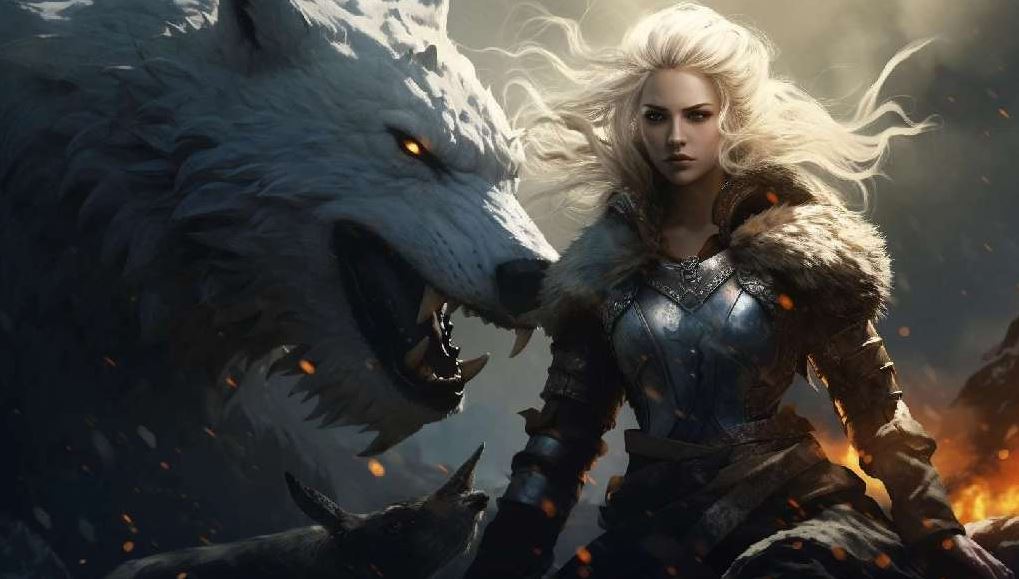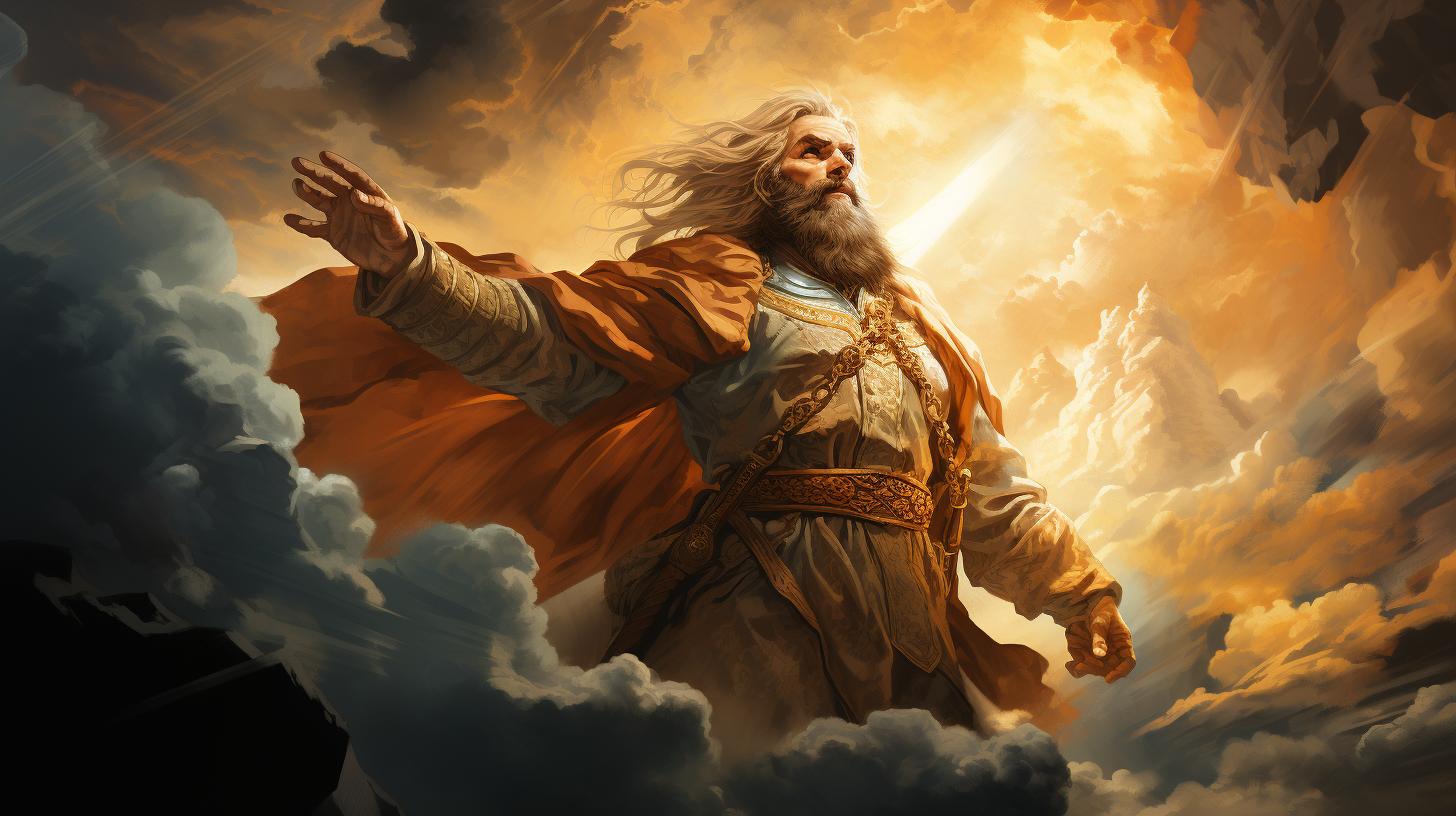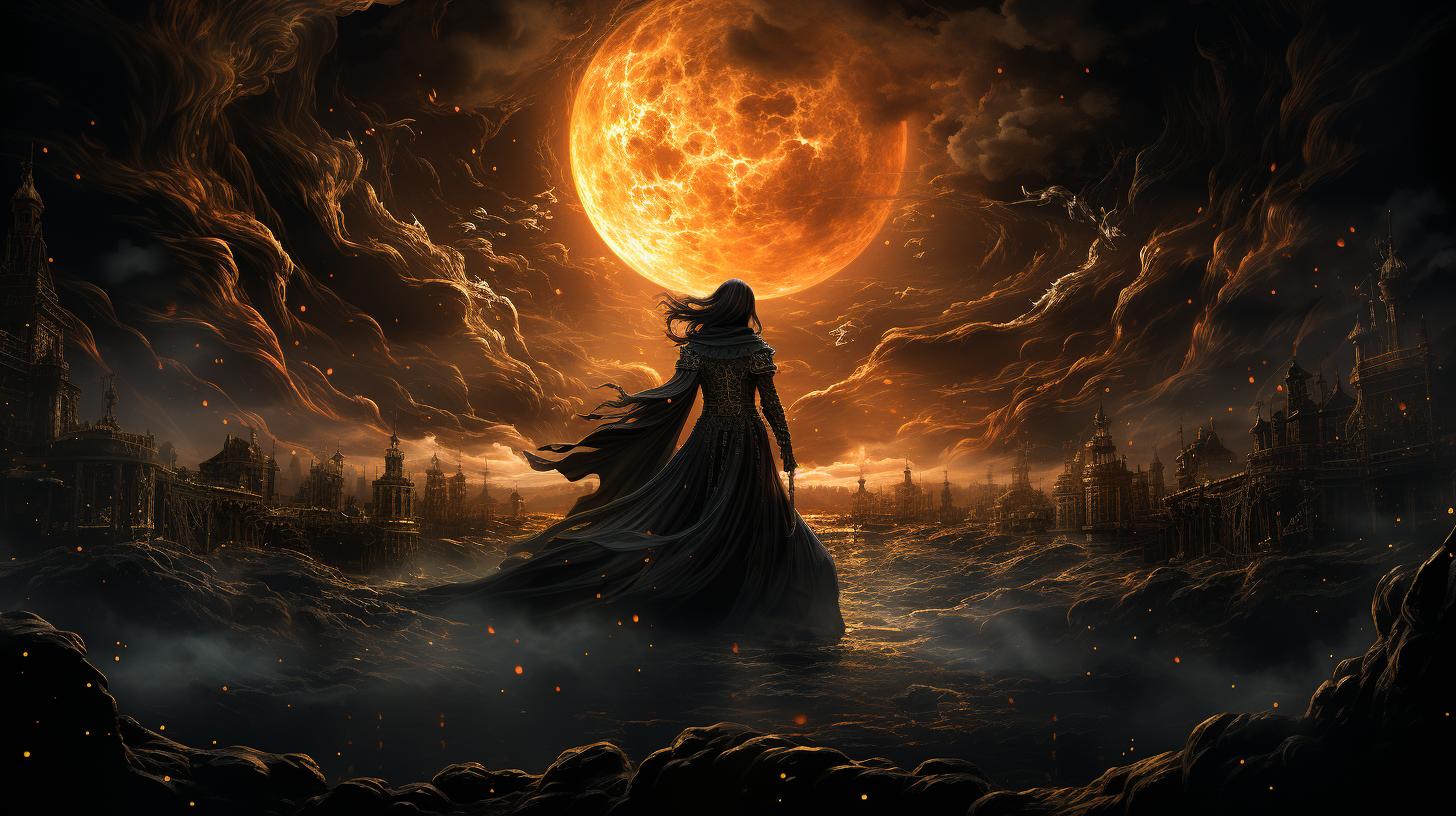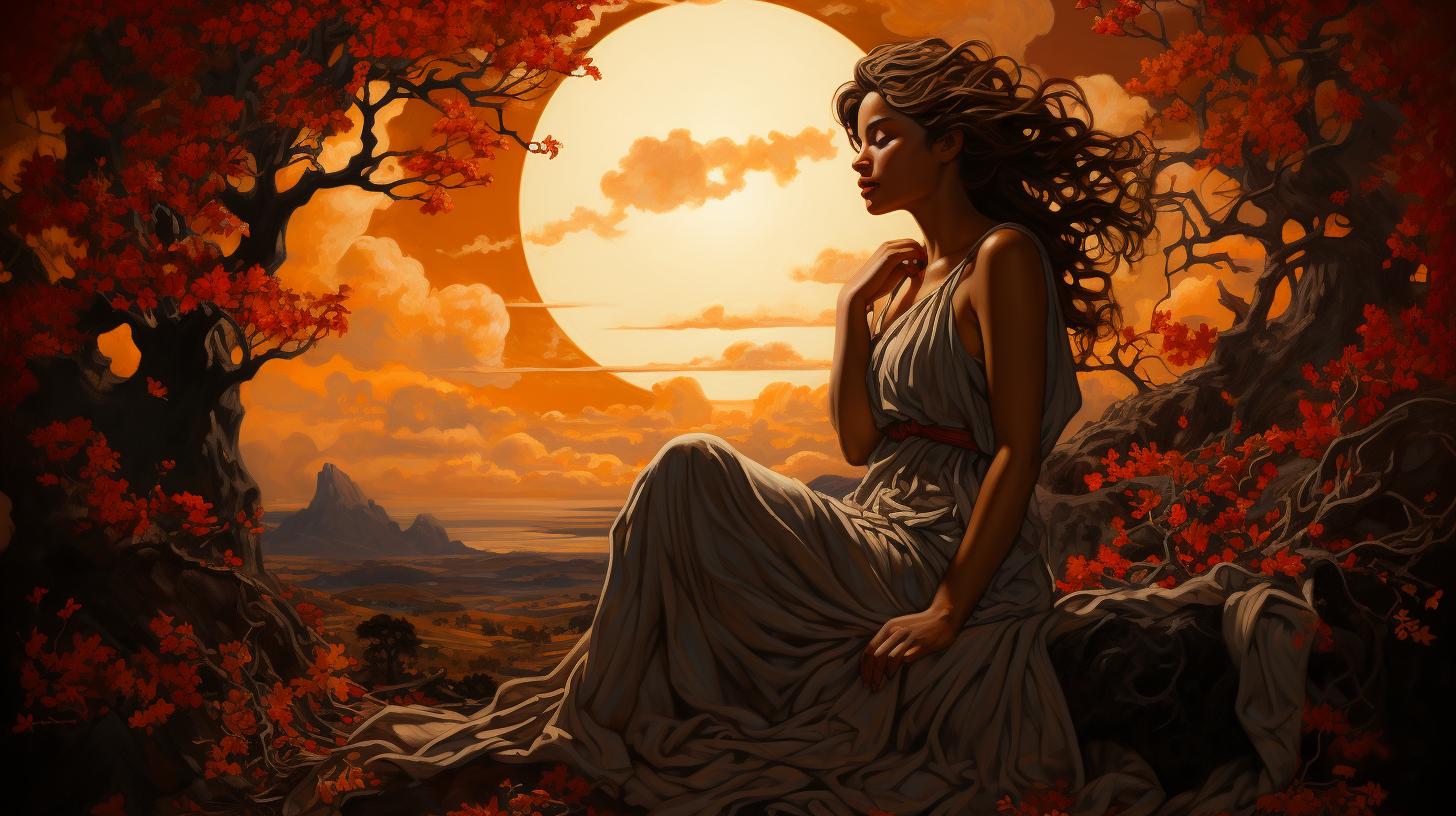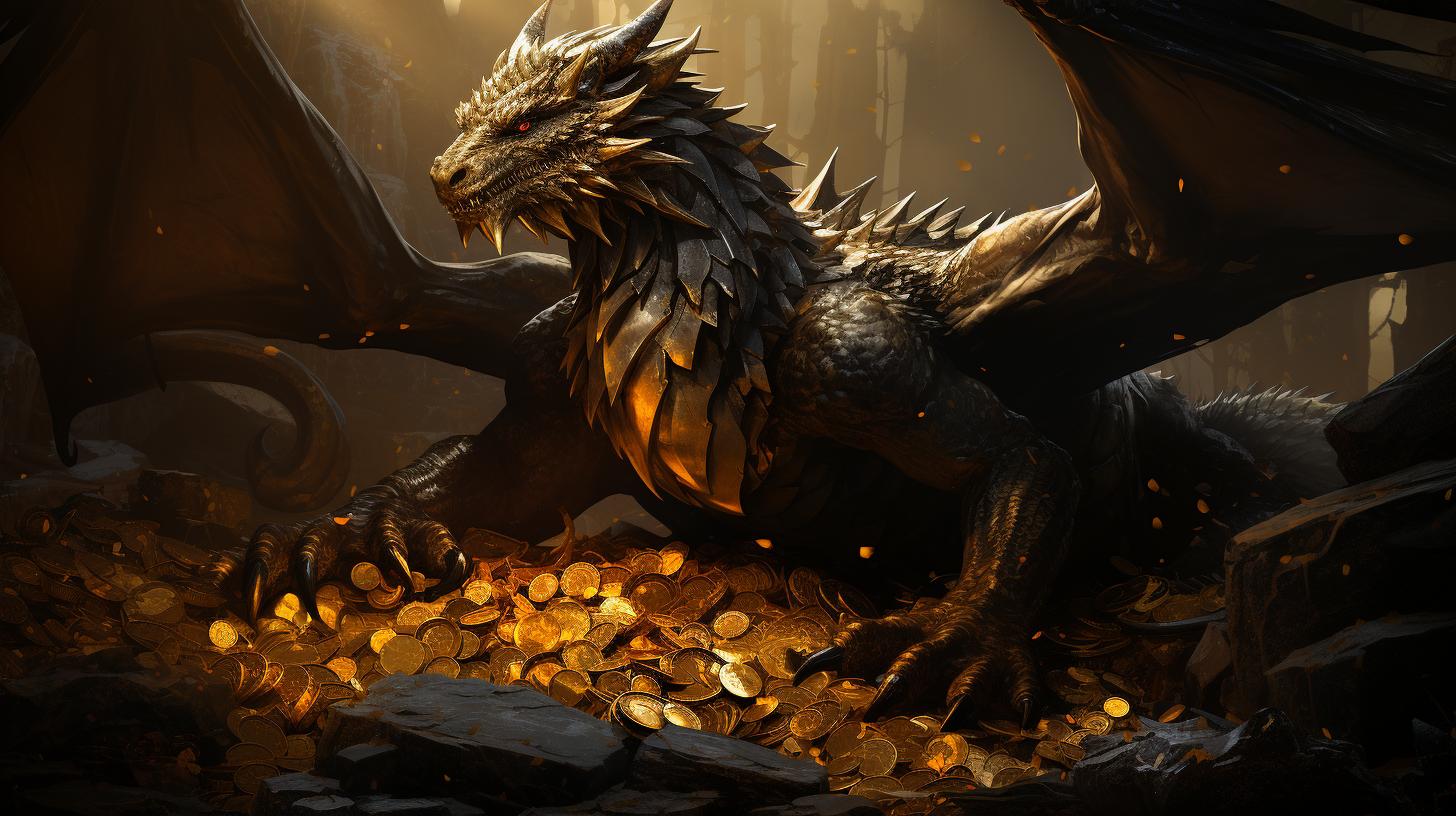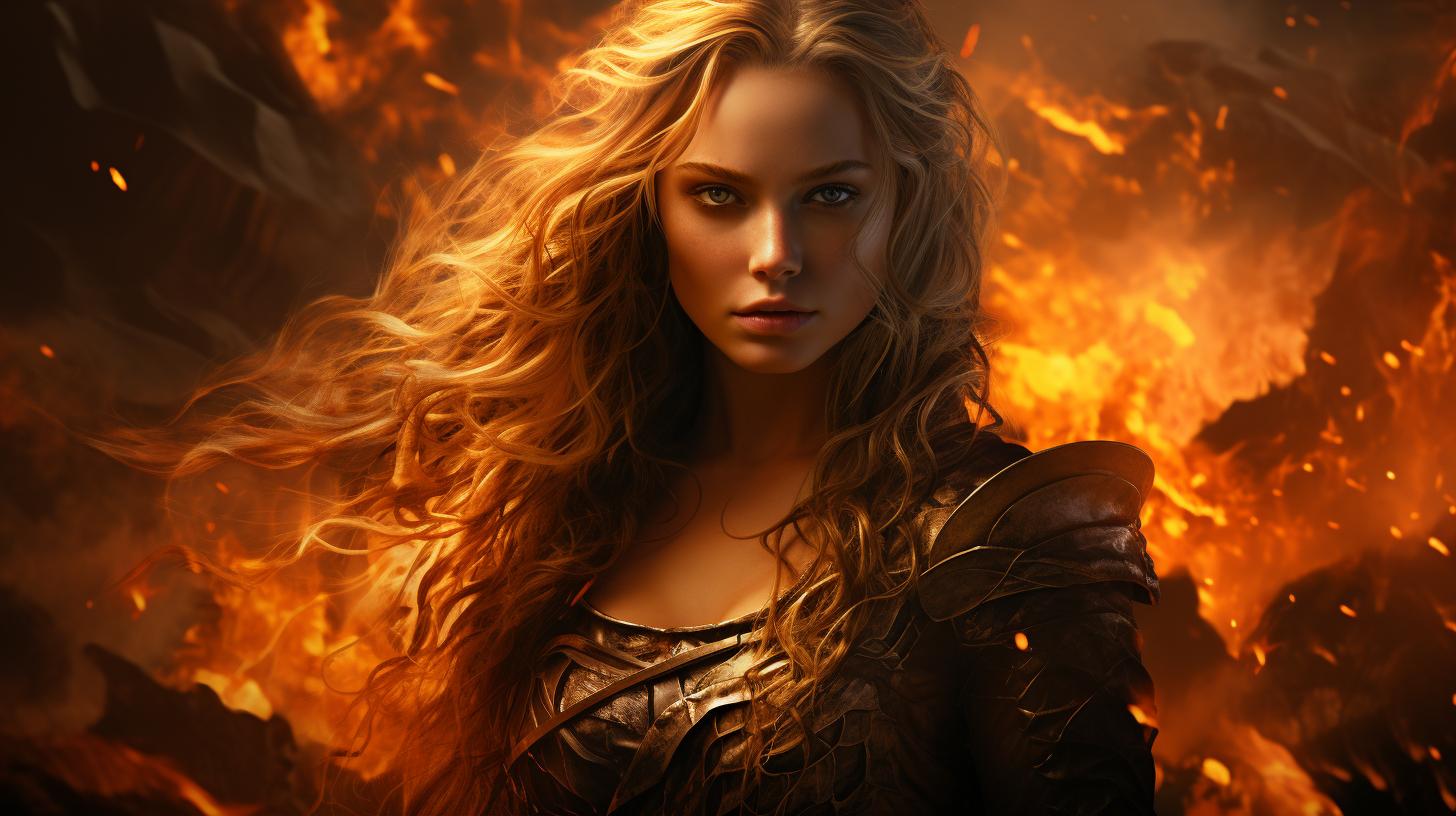What is Thrud the Goddess of: Unraveling the Mysteries of Norse Mythology
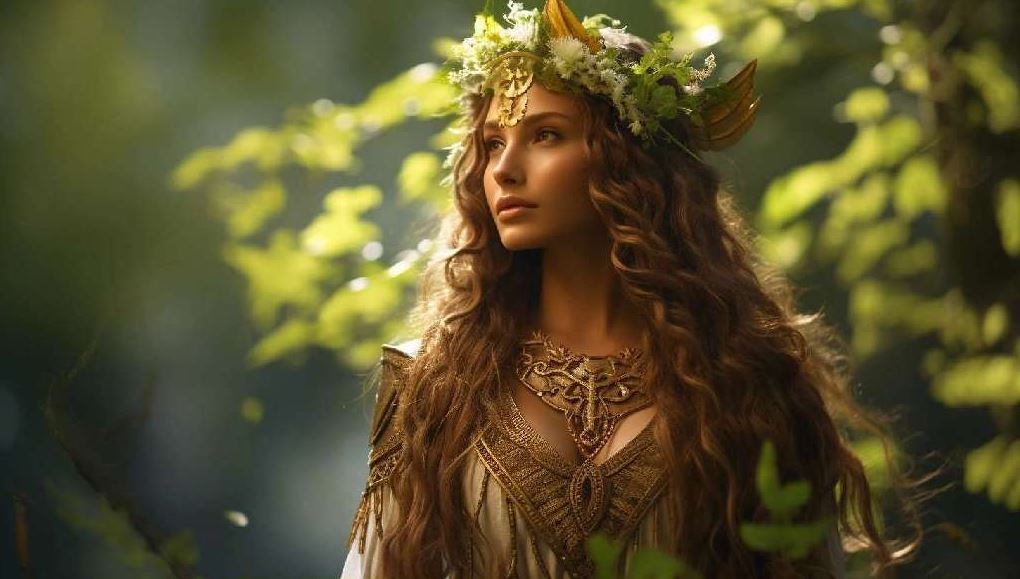
Thrud, the gentle and beautiful goddess of Norse mythology, holds a significant place in the realm of gods and legends. As the daughter of Sif and Thor, she inherits immense strength and remarkable abilities, including time travel, dream interpretation, and future prediction.
Thrud is revered as the deity of trees, flowers, grass, and willows, captivating the love of her parents. Her presence extends beyond ancient tales, making waves in the modern world through her portrayal in popular media, such as the renowned video game ‘God of War Ragnarok’.
Embark on a captivating journey as we delve into the mysteries surrounding Thrud, uncovering her origins, roles, and enduring influence. Stay tuned for an exploration of Thrud’s captivating stories and encounters, and a deeper understanding of her mythology that continues to resonate today.
The Mythological Origins of Thrud
Thrud, the valiant and enigmatic goddess of Norse mythology, embodies a rich history rooted in the ancient tales of the Nordic pantheon. Her origins lie in the divine lineage of her parents, Sif and Thor, who are prominent figures in Norse mythology.
Thrud’s Divine Lineage: Sif and Thor
Thrud’s mother, Sif, is the goddess of fertility and the golden-haired wife of Thor, the mighty god of thunder. As the daughter of the earth goddess, Sif possesses a deep connection to nature and the cycles of life.
Thrud’s father, Thor, is renowned for his incredible strength and bravery, wielding the mighty hammer Mjolnir. Known as the defender of Asgard and Midgard, Thor‘s unwavering protection extends to his beloved daughter Thrud.
The Meaning and Symbolism Behind Thrud’s Name
Derived from Old Norse, Thrud’s name translates to ‘strength’ or ‘power.’ This significance mirrors her inherent abilities and fierce presence in the Norse pantheon. As the goddess of strength, Thrud embodies the force and vigor that permeates through the realms.
Thrud’s name carries symbolism beyond raw physical power. It signifies inner strength, resilience, and the capacity to overcome challenges. Her name serves as a reminder of the fortitude required to navigate the trials and tribulations encountered in both the mortal and divine realms.
Exploring the mythological origins of Thrud unveils the influential lineage she descends from. This divine heritage, combined with the intriguing symbolism of her name, lays the foundation for comprehending Thrud’s significance within Norse mythology.
Let us unravel the enchanting aspects of Thrud’s persona, exploring her extraordinary powers and abilities, as well as the domain she presides over.
Thrud as a Gentle and Beautiful Valkyrie
Thrud’s depiction as a gentle and beautiful Valkyrie showcases her grace and elegance. As a celestial being, she embodies the qualities of honor and bravery, appearing as a maiden of unparalleled charm.
Thrud embodies the ethereal essence of an otherworldly warrior, both alluring and fierce in her appearance.
Thrud’s Extraordinary Powers and Abilities
Beyond her captivating beauty, Thrud possesses a set of extraordinary powers and abilities that set her apart. Her heritage grants her immense strength inherited from her father, Thor. Moreover, she exhibits exceptional skills such as time travel, dream interpretation, and the ability to predict the future.
These remarkable capabilities contribute to her stature as a revered and enigmatic figure.
Thrud’s Domain: Goddess of Trees, Flowers, and Nature
Thrud presides over a domain that encompasses the realm of nature itself. Revered as the goddess of trees, flowers, and nature, she oversees the growth and vitality of these natural elements.
Her connection to the plant kingdom provides her with a deep understanding and affinity for the natural world, making her a symbol of fertility, rejuvenation, and the cycle of life.
Within the intricate web of Norse mythology, Thrud’s unique attributes and roles weave together to create a complex and captivating character. Her embodiment of both a gentle Valkyrie and the goddess of nature epitomizes the diverse aspects of femininity and power within Norse mythology.
Through her extraordinary powers and dominion over the natural world, Thrud remains an enduring symbol of strength and beauty, leaving an indelible mark on the tapestry of Norse mythology.
Thrud in Norse Mythology and Literature
Thrud, the captivating goddess of Norse mythology, holds a significant presence within the realms of ancient sagas and renowned literary works. Her appearances in old Norse sagas and Eddas illuminate her enduring legacy and role in the Norse mythological pantheon.
Thrud’s Appearances in Old Norse Sagas and Eddas
In the collection of Nordic sagas and poems, Thrud emerges as a notable figure, depicting her divine essence and captivating attributes. From the Poetic Edda to the sagas and legends, Thrud’s presence often symbolizes beauty, strength, and nature’s unyielding force.
- The Poetic Edda: Within the ancient poems of the Poetic Edda, Thrud’s name and characteristics are intertwined with tales of gods, heroes, and mythical creatures. Her appearance in Völuspá reveals her role as a Valkyrie, the embodiment of beauty and grace.
- The Sagas: In various sagas, Thrud’s captivating nature becomes evident as she intertwines with the fates of gods and mortals alike.
Her presence is felt in sagas such as the Lay of Alviss, where Thor prevents her marriage to the dwarf Alviss.
Thrud’s Significance in the Prose Edda and Poetic Edda
The Prose Edda and the Poetic Edda, both significant literary works in Norse mythology, shed further light on Thrud’s significance and her captivating role as a goddess.
- The Prose Edda: Penned by the renowned scholar and poet Snorri Sturluson, the Prose Edda delves into the realms of gods, giants, and mythical beings. Within this work, Thrud’s divine lineage and abilities are explored, displaying her prowess as a Valkyrie and seeress.
- The Poetic Edda: Comprised of ancient poems and epic tales, the Poetic Edda reveals Thrud’s multifaceted nature.
Tales such as Þrymskviða, where Thor‘s hammer Mjolnir is stolen, emphasizes Thrud’s quest for the powerful weapon and showcases her determination and resilience.
Through the timeless words of these literary masterpieces, Thrud’s presence echoes through the ages, captivating the imaginations of those enthralled by Norse mythology and literature.
Thrud in Pop Culture and Media
The intriguing mythology of Thrud has not only captivated the ancient Norse societies but has also found its place in contemporary pop culture and media. Thrud’s enchanting presence can be witnessed in various forms, showcasing her significance and enduring legacy today.
Thrud’s Representation in the Video Game ‘God of War Ragnarok’
One prominent portrayal of Thrud can be seen in the popular video game ‘God of War Ragnarok’. In this immersive gaming experience, Thrud is introduced as the daughter of Thor and Sif, embarking on a quest alongside Atreus through the realms of Norse mythology.
Her aspiration to become a mighty Valkyrie is vividly depicted, as she wields electrifying swords and seeks to reclaim Mjolnir, the powerful hammer cast aside by Odin. This representation of Thrud showcases her strength, beauty, and determination, captivating players with her divine prowess and role in shaping the game’s narrative.
Thrud’s Role and Influence in Contemporary Norse Mythology
Beyond the realm of gaming, Thrud continues to evoke fascination in contemporary Norse mythology. Her stories and attributes serve as a source of inspiration for artists, writers, and enthusiasts alike. From visual artworks to literary adaptations, Thrud’s depiction signifies the enduring allure of Norse mythology and its impact on modern culture.
Her portrayal as a gentle yet formidable goddess, embodying the spirit of nature and strength, resonates with individuals seeking a connection to ancient folklore in today’s world.
Exploring the Legends: Stories and Encounters with Thrud
Welcome to the captivating world of Thrud, where legends and encounters unfold to reveal the depths of her mythology. Journey with us as we delve into two remarkable tales that shed light on Thrud’s presence in Norse mythology.
Thor‘s Protective Nature: The Lay of Alviss
In the Lay of Alviss, a curious encounter takes place between Thrud and an enigmatic dwarf named Alviss. Intrigued by Thrud’s beauty, Alviss seeks to marry her. However, Thor, ever protective of his daughter, intervenes to prevent the union.
This myth showcases both Thor‘s immense strength and his role as a father fiercely guarding his beloved daughter. It highlights Thrud’s desirability and the lengths Thor would go to protect her.
Thrud’s Quest for Mjolnir: After Thor‘s Demise
Following Thor‘s demise, Thrud embarks on a perilous quest to recover the mighty Mjolnir, cast aside by Odin. Determined and fearless, she traverses treacherous realms in pursuit of the legendary hammer.
Thrud’s search for Mjolnir exemplifies her independent nature and her resolve to carry on her father’s legacy. She becomes an embodiment of strength and power, fighting against formidable adversaries in her quest.
Join us as we uncover the rich tapestry of stories surrounding Thrud, gaining invaluable insights into her character and significance in Norse mythology.
Unveiling the Mysteries: Deepening Our Understanding of Thrud
As we delve deeper into the enigmatic world of Thrud, we uncover various interpretations and variants of her captivating mythology. This exploration allows us to gain a more comprehensive understanding of Thrud’s significance and multifaceted nature.
Analyzing Different Interpretations and Variants of Thrud’s Mythology
Thrud’s mythology has been the subject of extensive analysis and interpretation, leading to multiple variants of her story. Scholars and enthusiasts have dissected ancient texts, such as the Prose Edda and Poetic Edda, to decipher the different aspects of her character and the role she plays in Norse mythology.
One interpretation suggests that Thrud embodies not just physical strength, but also intellectual prowess and wisdom. This perspective emphasizes her ability to interpret dreams and predict the future, highlighting her role as a seer and an oracle.
Furthermore, some scholars argue that Thrud’s association with trees, flowers, and nature extends beyond their literal representation. They propose that she symbolizes the underlying forces of growth, fertility, and renewal in the natural world, making her a vital figure in the cycle of life.
Additionally, various adaptations and retellings of Norse mythology have contributed to the evolution of Thrud’s character. Different authors and artists have added their own creative twists, reimagining her as a complex and dynamic goddess who embodies strength, beauty, and an unwavering determination.
Debunking Common Misconceptions Surrounding Thrud
Like any mythological figure, Thrud has been subject to misinterpretation and misconceptions over time. It is essential to dispel these misunderstandings to have a clearer comprehension of her true nature.
- Misconception: Thrud is solely a warrior goddess. While Thrud possesses formidable strength and is associated with valkyries, her character encompasses much more than just prowess in battle. Recognizing her diverse abilities helps us appreciate the depth of her mythology beyond mere combat.
- Misconception: Thrud’s name represents physical strength exclusively. While
Thrud’s name does mean “force” in Old Norse, it also encompasses other forms of strength, such as inner resilience, intellectual acuity, and spiritual fortitude.
- Misconception: Thrud is a minor goddess with limited significance. Despite
not being as well-known as some other Norse deities, Thrud’s influence extends throughout mythology, literature, and even modern media, making her a prominent figure worth exploring and understanding.
By shedding light on these misconceptions, we can paint a more accurate and comprehensive picture of Thrud, appreciating the depth and breadth of her divine existence.
6.1. Analyzing Different Interpretations and Variants of Thrud’s Mythology 6.2. Debunking Common Misconceptions Surrounding Thrud
The Influence of Thrud in Norse Mythology and Literature
Thrud’s presence in Norse mythology and literature is profound, leaving an indelible mark on the tales and sagas passed down through generations. Her depiction as a valiant and beautiful valkyrie resonates in various Old Norse sagas and Eddas, highlighting her role as a divine and powerful being.
In both the Prose Edda and Poetic Edda, Thrud’s significance is emphasized, showcasing her exceptional lineage and captivating abilities.
Thrud’s Representation in Popular Culture and Media
Thrud’s timeless allure extends beyond the realm of mythology, making her presence known in contemporary pop culture. The widely acclaimed video game ‘God of War Ragnarok’ presents Thrud as the daughter of Thor and Sif, standing out with her electrified swords as she aids Atreus on his journey through the Norse realms.
This portrayal further solidifies Thrud’s position as a beloved character, captivating players with her strength, beauty, and determination.
Analyzing Different Interpretations and Variants of Thrud’s Mythology
The mythology surrounding Thrud has evolved over time, resulting in a variety of interpretations and variants. Scholars and enthusiasts have delved deep into the nuances of her character, examining her divine lineage, unique powers, and association with nature.
The exploration of these myriad interpretations sheds light on the diverse understanding and appreciation of Thrud’s story, highlighting her multifaceted nature as a goddess of strength and natural beauty.
Debunking Common Misconceptions Surrounding Thrud
As with any mythical figure, misconceptions and misinterpretations often arise. It is crucial to dispel any inaccuracies surrounding Thrud’s mythology to ensure a comprehensive understanding of her character. By debunking various misconceptions, we can separate fact from fiction and unravel the true essence of Thrud as a goddess of strength and nature.
In conclusion, Thrud’s enduring legacy as a goddess of strength and nature encompasses her divine lineage, captivating roles, and influential presence in both Norse mythology and popular culture. Through the centuries, Thrud has remained a symbol of power, beauty, and the natural world, continuing to inspire and fascinate those drawn to her fascinating story.
….











